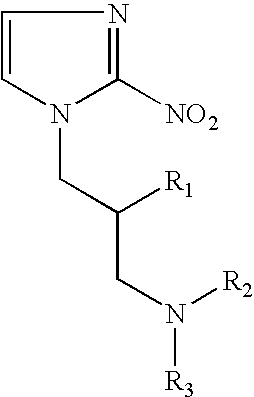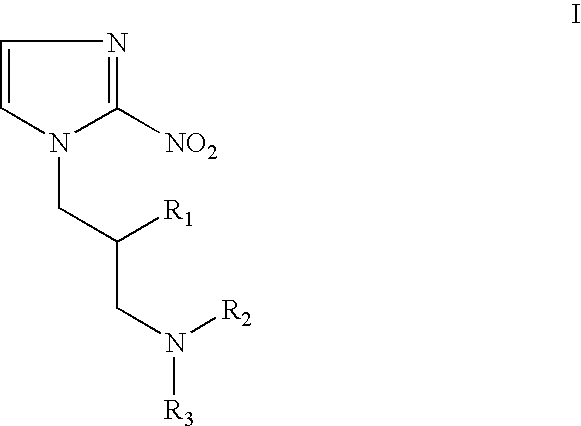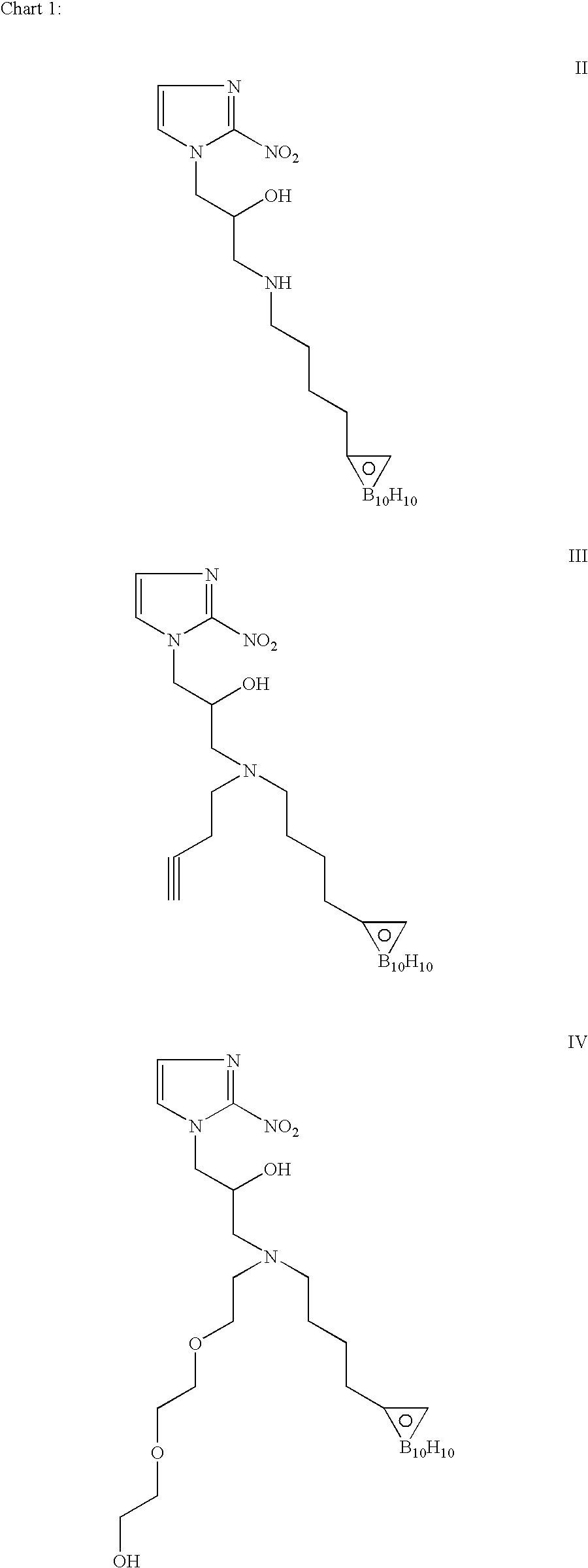Hypoxia-selective, weakly basic 2-nitroimidazole delivery agents and methods of use thereof
a 2-nitroimidazole and weakly basic technology, applied in the field of 2nitroimidazole compounds, can solve the problems of stalled clinical progress, and boron delivery agents suffering greatly from poor water solubility, so as to improve the water solubility and uptake of delivery agents.
- Summary
- Abstract
- Description
- Claims
- Application Information
AI Technical Summary
Benefits of technology
Problems solved by technology
Method used
Image
Examples
examples
[0094]We have synthesized a number of boron cluster compounds [III(7), II(10), V(11) and IV(16)]. As shown in Scheme 1, we have prepared conjugated closo-carboranyl [C2B10H10] compounds 3 and 4. Tosylation of 5-Hexyn-1-ol (1) gave 5-hexyn-1-tosylate (2), which was then reacted with acetonitrile-decaborane adduct (B10H12-2CH3CN) to produce (3). Subsequent iodination gave closo-1,2-decaboranylethyl-1-(4-Iodo)butane (4).
[0095]
[0096]
[0097]
[0098]
[0099]
[0100]
Experimental
General
[0101]All chemicals were commercial reagents unless otherwise stated. TLC was performed on silica gel plates (Merck, 60F254). Column chromatography was run on silica gels (60 Å, Merck 230-400 mesh). 1H and 13C NMR spectra were recorded by Varian NMR-300 spectrometers using the deuterated solvents (CDCl3, DMSO-d6, CD3OD and D2O) and TMS was used as internal standards. Mass spectra were obtained by MALDI-TOF in the positive ion mode.
Synthesis of 5-carboranyl-hexanyl tosylate (2)
[0102]Into a mixture of 10 g (0.102 mol)...
PUM
| Property | Measurement | Unit |
|---|---|---|
| diameter | aaaaa | aaaaa |
| pKa | aaaaa | aaaaa |
| structure | aaaaa | aaaaa |
Abstract
Description
Claims
Application Information
 Login to View More
Login to View More - R&D
- Intellectual Property
- Life Sciences
- Materials
- Tech Scout
- Unparalleled Data Quality
- Higher Quality Content
- 60% Fewer Hallucinations
Browse by: Latest US Patents, China's latest patents, Technical Efficacy Thesaurus, Application Domain, Technology Topic, Popular Technical Reports.
© 2025 PatSnap. All rights reserved.Legal|Privacy policy|Modern Slavery Act Transparency Statement|Sitemap|About US| Contact US: help@patsnap.com



